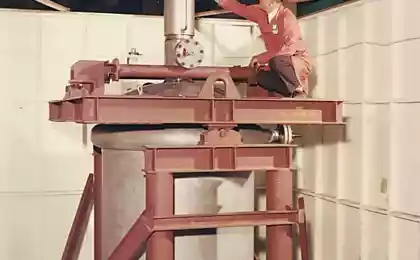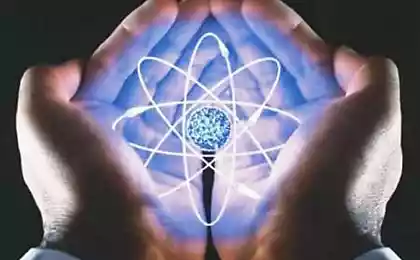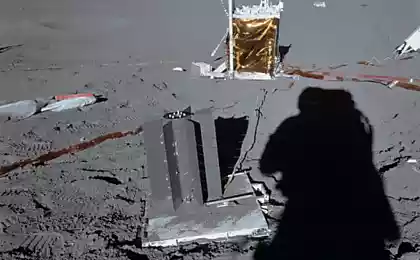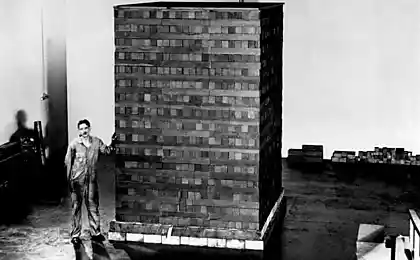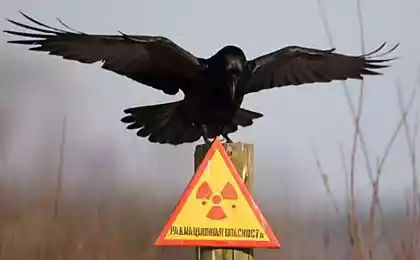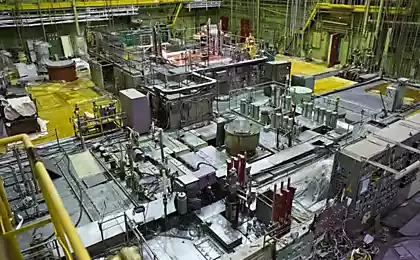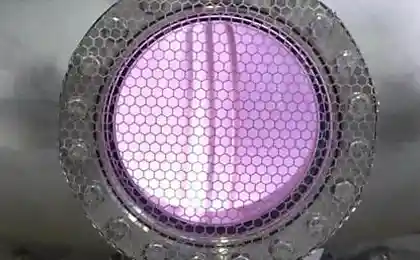2248
Field plowing tractor peace, flying through the sky reactor

Unlike atomic vzryvolёtov , which existed only in the projects, and atomic engines , which have reached the stage of ground tests, nuclear reactors have been used in space for energy and flew enough mass, they fly into space for more than three dozen.
Theory h4> We begin, as always, with the theory. It would be great if the nuclear chain reaction gave directly the electricity that could be used immediately. But alas, the result of nuclear decay is the heat that has to somehow be processed into electricity. For this purpose, the heat from the reactor is in heat engines (thermoelectric converters thermionic converters, turbines, Stirling engines, and the like), generating electricity, and is then discharged into space with a radiator-cooling. A reactor takes badminton shuttlecock characteristic outlines:

In space, every gram of weight in gold, so the design of heat engines and radiators becomes as important as the design of the reactor. And the inevitable losses in the conversion of heat into electricity are forced to talk about the two parameters - the heat and electric power. And electrical power in times less heat. In terrestrial power reactors that have no restrictions on the weight and size, the electric power is 3-4 times less heat in space reactors until the situation is much worse.
A comparison with solar panels h4> To figure parameter space nuclear reactors were not dead, let's compare them with the parameters of the solar panels. At site of "Saturn» have parameters of solar cells:
- Silicon Panels: 140 W / kg at the beginning of the work, and 80 W / kg after 15 years.
- GaAs panel: 196 W / kg at the beginning of work and 157 W / kg 15. Ферменные ISS design with solar panels have a mass 15824 kg. Each design bears two solar "wings», giving to 31 kilowatts at the beginning of the work, and 26 through 15 years each. Accordingly, one design will give us 60 kilowatts to 15 tons of weight, and for a megawatt of energy, we need 250 tons. Of course, in the case of a specific engineering design can reduce this somewhat frightening magnitude, for example, increasing the length of the panel, but in reality the solar installation, which gives us a 1 megawatt of energy, will be closer to 250 tons, than to 5.
History h4>
USA h5> SNAP
In the US, working with the energy space reactors originally conducted in the framework of the SNAP (Systems for Nuclear Auxiliary Power - nuclear auxiliary power systems). In 1959 he launched the experimental reactor SER, which had a thermal power of approximately 50 kW. The reactor was purely experimental, the heat just dissipates into the air. After two years, the reactor was opened the way following models.
The second reactor was SNAP-2, who worked from 1961 to 1962. With a heat output of 55 kilowatts, the design allows you to connect a heat engine capacity of 3, 5 kW.
The next step was two reactors SNAP-8, a heat output of 600 kW and 1 MW. Megawatt reactor core had 24h84 cm containing 8, 2 kilograms of nuclear fuel, mercury used as a coolant and could produce energy as the steam engine (according to циклу Rankine ).
The pinnacle of the program was the reactor SNAP-10A, which was launched on April 3, 1965:

The reactor had the following characteristics:
- Dimensions of the core 39, 6h22, 4 cm.
Project SNAP worked with radioisotope generators, but US nuclear reactors in space longer fly.
SP-100
In 1983, the research program was launched SP-100 , whose aim was to develop a reactor with a термоэмиссиоными or thermoelectric converters and heat transfer using тепловых tubes :

Judging by the lack of information, the program was closed.
SAFE
In the beginning there was zero draft SAFE (Safe Affordable Fission Engine - safe engine available on fissile materials). SAFE-400 reactor was to have a thermal power of 400 kW, 100 kW electric, and used to produce electricity gas turbine. On the Internet, there is a photo of the reactor 30 SAFE-2001:
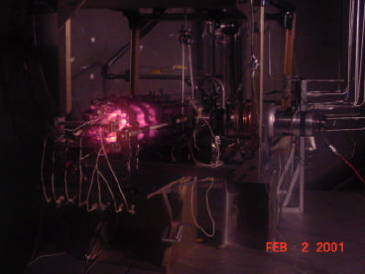
In the источниках as the end date of the project is indicated in 2007 that involves freezing or termination.
Los Alamos project
In 2012, there was a very cute video with a simple power reactor project from Los Alamos National Laboratory:
The proposed reactor is very simple in design, which makes it available for production, but it is no different record parameters. As the core is proposed to use a hollow cylinder made of enriched uranium weighing 22 5 kg. Active zone surrounds the beryllium neutron reflector diameter of 25 cm. The height of the core is 30 cm. The reactor control rod is used only of boron carbide. The heat from the reactor heat pipes is given and applied to the двигатели Stirling total capacity of 500 watts. Here is a diagram of the reactor:

Unfortunately, this is just a presentation of the project and the subsequent fate is unknown.
USSR and Russia h5> «Daisy»

The first domestic experimental space nuclear reactor was "Daisy". The reactor thermal power of 40 kW and 800 watts of electricity using thermoelectric converters. The reactor was first launched in 1964. SP Korolev wanted to use the "Daisy", together with the plasma electric propulsion. But after the test "Daisy" the summer of 1966, after the death of Queen in space she flew.
«Buck»
But the second series of space reactors - BES-5 "Beech" - to fly into space more than three dozen times. These reactors were used as a source of electricity for radar reconnaissance satellites US-A , known in the West as RORSAT:
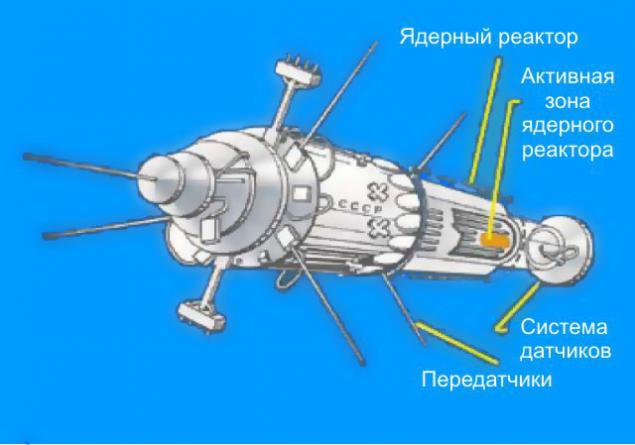
Radar demanded a lot of energy and a low orbit. A low orbit means that the satellite will always fall into the Earth's shadow. A set of solar arrays and batteries would be too heavy, and it made a nuclear power plant only option. BES-5 reactor had the following parameters:
Heat output: 100 kW. Electric power: 3 kW. Weight of the reactor: 900 kg. Type the heat engine: Thermoelectric generator. Weight nuclear fuel: 30 kg. life: ~ 135 days «Легенда».«Topaz»
Development of reactors "Buk" TEU-steel 5 "Topol", they "Topaz-1»:
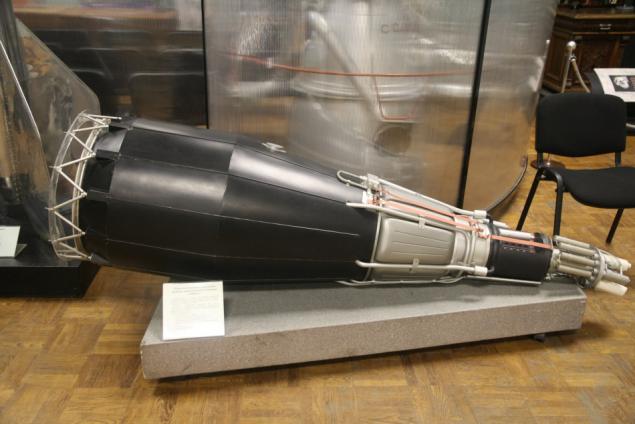
"Topaz" had improved parameters:
Heat output: 150 kW. Electrical power: 6.5 kW Type the thermal machine: термоэмиссионный generator . Weight nuclear fuel 11 kg. The term of 1 year. «Космос-1818» and «Космос-1867» and used for the same purpose - signals intelligence.
Yenisei
Type reactors "Yenisei" was proposed to use for civilian satellite television broadcasting. A special feature was the replacement of the reactor fuel elements to the classic power generating channels - active zone is aligned with the heat engine. The reactor should have a thermal capacity of 115-135 kW electric 4, 5-5, 5 kW and life of three years. The project was closed in the early 90's, in 1992 the United States bought the two reactors in space but did not use them.
Transport and Energy module RSC "Energia»
Since about 2010 there is an active development of transport and energy module using nuclear reactors and electric propulsion. Such nuclear tug can haul cargo on the highway Earth-Moon, and after making a basic resource to fly together with the probe to the other planets of the solar system. The project was shown at MAKS 2013 , appearing regularly news about the progress of work. The latest news - assembled the first fuel element . The characteristics of the power plant and the module as a whole is also quite impressive:
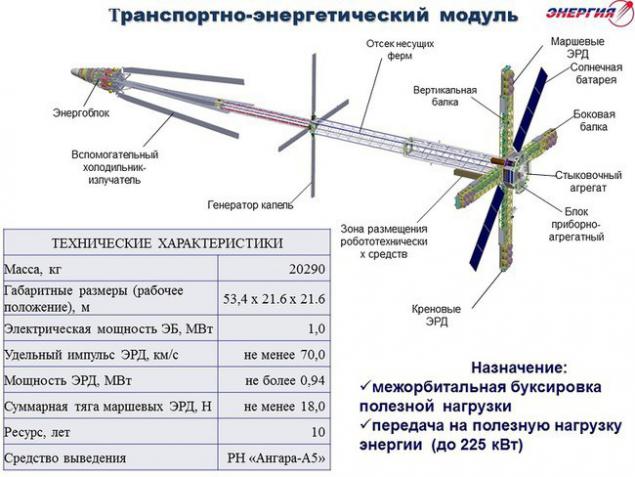
Energy reactor power 1MW combined with electric propulsion with a specific impulse of 7000 seconds and a thrust of 18 N (2 kg) - a technological breakthrough.
Security h4> Speaking of nuclear power not to mention the known radiation accidents and measures to deal with them.
In 1964 there was a destruction in the atmosphere of American radioisotope generator SNAP-9A of the accident on the carrier rocket ascent. Since RTGs use highly concentrated plutonium, which is scattered in the atmosphere, there was a significant increase in background radiation worldwide. The lesson was learned in the design changes were made, and when in 1968 there was a failure of the satellite "Nimbus-B" RTG SNAP-19B2, nuclear materials are not dispersed in the atmosphere, and fell into the ocean and were subsequently raised from the ocean floor without infection territory. In 1970, the RTG lunar module "Apollo 13" fell into the ocean and sank to a depth of 6,000 meters without damage and contamination. In 1973 he fell into the Pacific Ocean Soviet satellite reactor "Buk". Data on contaminated land is not. In 1978, the territory of Canada fell wreckage of the satellite "Cosmos-954". Because of the shortcomings of the emergency reactor core was destroyed enough, and there was a slight contamination of the terrain. However, a terrible scandal erupted, the USSR had to pay compensation to Canada for expenditures incurred in search of debris and decontamination areas. After this event, the security system has been enhanced, the gasifier has been installed, the guaranteed active area destructive reentry. Falling satellite "Cosmos-1402" in the South Atlantic has been more than successful, and was registered only a slight increase in the natural radiation background. In 1996 there was a drop AMC "Mars-96", its RTGs are not destroyed and successfully drowned.
General considerations of security measures h5>
A nuclear reactor is safer RTG, because the latter contains more radioactive materials. RTGs placed in a capsule that can withstand the emergency fall into the atmosphere, protecting from radioactive contamination. A nuclear reactor can be filled into capsules or dissipate in the atmosphere at the emergency fall. A nuclear reactor is minimal risk to enrollment. Consequently, the reactor should start already in orbit. The spent nuclear reactor can be safely withstood him several hundred years in orbit burial. In this case, materials with short half-life disappear, and materials with long half-lives are not dangerous. Drip refrigerators h4> If you look again at the picture of transport and energy module, you will notice, first, the absence of the classical scheme of the "shuttlecock", and secondly, a "generator drops" in the middle of the main farm. The fact that now two competing type refrigerators, radiators. Classic solid radiators are simple but heavy. As an alternative to them, have been proposed drip refrigerators. As is known from physics that the larger the surface of the body, the better it is involved in heat exchange. That is why the radiators in houses ribbed. In space, you can create a stream of droplets, which at the minimum weight will be very effectively dissipate heat:
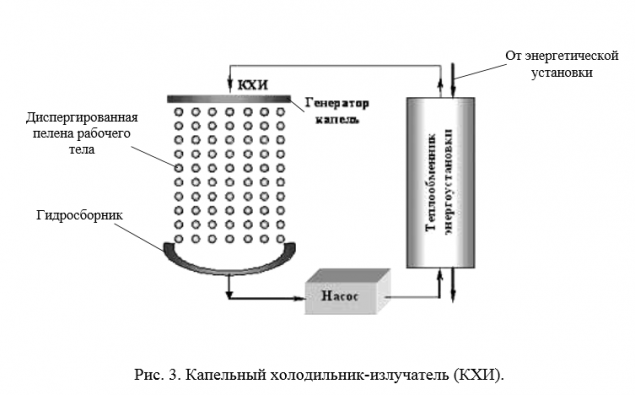
Drip refrigerator promises reduction in mass of the radiator at times:
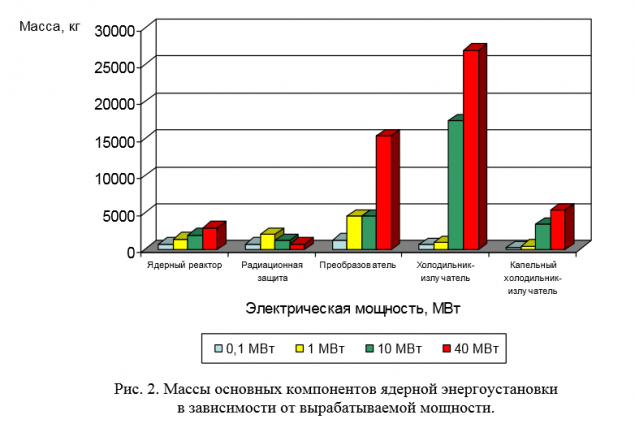
In space (at the station "Mir" and ISS) were tested models of refrigerators drip:
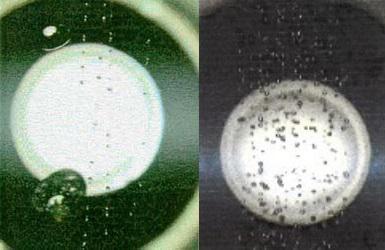
The main intrigue is now in development speed - Will the drip make refrigerators in 2020, when the transport-energy module should fly.
Conclusion h4> In astronautics use of nuclear reactors will give us an unattainable level of energy with solar panels. A combination of an atomic energy reactor and the electric engine promises a new level of capability for space exploration.
Used Sources and Further Reading h4> Also used Wikipedia:
«Конструкции energy-power installations spacecraft », methodical complex « Works on drip cooler-radiator », Research Center website. Keldysh. «History of Russian space nuclear installations» , site of "Made us». Li > Materials drip refrigerators: times , two . Source: habrahabr.ru/post/229625/







